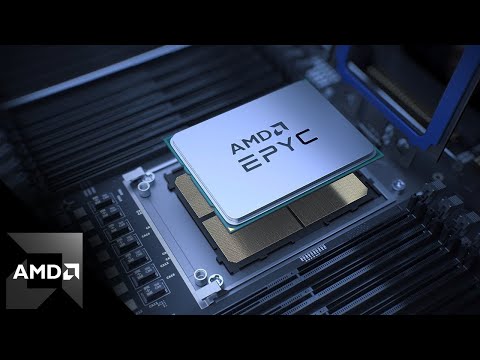In the ever-evolving world of technology, AMD has carved out a name for itself as a leader in advanced microprocessors. With a reputation for cutting-edge innovation, AMD processors are known for their high performance, energy efficiency, and affordability, making them a popular choice for consumers, gamers, and businesses alike. This article explores the impact of AMD processors on modern computing, their key features, and how they continue to drive advancements in the tech industry.
The Rise of AMD in the Processor Market
AMD, short for Advanced Micro Devices, has been a formidable competitor in the semiconductor industry for decades. Since its founding in 1969, AMD has consistently pushed the boundaries of technology to develop processors that meet the demands of both everyday users and high-end professionals. While Intel dominated the market for many years, AMD made significant strides with its Ryzen and EPYC series, disrupting the status quo and capturing a large share of the market.
AMD processors have become synonymous with value for money, offering competitive performance at more affordable prices compared to their counterparts. This strategy has helped AMD gain a loyal following among gamers, content creators, and enterprises looking for high-performing solutions without breaking the bank.
Key Innovations in AMD Processors
AMD has made several groundbreaking advancements in processor technology that have set it apart from competitors. Some of the key innovations include:
1. Multi-Core Architecture
One of the standout features of AMD processors is their multi-core architecture. AMD has consistently pushed the envelope by offering more cores and threads at various price points. This approach allows users to handle multiple tasks simultaneously without compromising on performance. For example, the Ryzen 9 5900X features 12 cores and 24 threads, making it ideal for gamers, video editors, and software developers who require powerful multitasking capabilities.
2. Zen Architecture
The introduction of the Zen architecture in 2017 marked a turning point for AMD. Zen processors offer improved instructions per clock (IPC), power efficiency, and overall performance. The successive generations of Zen architecture, including Zen 2, Zen 3, and Zen 4, have continued to build on these improvements, with each iteration delivering better speed, efficiency, and thermal performance.
3. 7nm Process Technology
AMD was one of the first companies to embrace the 7nm process technology, which allows for smaller and more energy-efficient transistors. This technology has enabled AMD to produce processors that deliver exceptional performance while keeping power consumption low, which is particularly important in today’s energy-conscious world. The EPYC processors, in particular, have leveraged the 7nm architecture to deliver industry-leading performance for data centers and cloud computing applications.
AMD Processors for Gamers
AMD has long been a favorite among gamers, thanks to its powerful Ryzen processors, which offer excellent price-to-performance ratios. Ryzen CPUs are designed to handle demanding games while providing smooth and immersive experiences. The latest Ryzen processors are also optimized for compatibility with modern GPUs, making them the perfect choice for gaming rigs.
1. Ryzen 5000 Series
The Ryzen 5000 series, built on Zen 3 architecture, has raised the bar for gaming processors. These CPUs deliver best-in-class single-threaded performance, which is crucial for high-frame-rate gaming. Whether you’re playing graphically intensive AAA titles or engaging in competitive eSports, AMD processors offer the horsepower needed to achieve ultra-high frame rates and low latencies.
2. Future-Proofing
Another reason gamers choose AMD processors is future-proofing. With support for the latest PCIe 4.0 standard, AMD processors ensure that gamers can take advantage of the fastest SSDs and GPUs on the market. This future-proofing gives AMD users confidence that their systems will continue to perform well as new technologies emerge.
AMD in the Enterprise Space: EPYC Processors
Beyond consumer applications, AMD has made significant inroads in the enterprise market with its EPYC series of processors. Designed for servers and data centers, EPYC processors are renowned for their scalability, energy efficiency, and performance in multi-threaded applications.
1. Scalability and Performance
AMD EPYC processors offer up to 64 cores and 128 threads, making them ideal for heavy computational workloads like virtualization, data analytics, and cloud computing. The high core count allows businesses to run multiple virtual machines or containers on a single processor, reducing infrastructure costs while improving performance.
2. Energy Efficiency
In the era of sustainability, energy efficiency has become a critical factor for data centers. EPYC processors excel in this area, offering industry-leading performance-per-watt. This means that enterprises can handle large workloads without consuming excessive power, resulting in lower energy bills and a reduced carbon footprint.
3. Security Features
AMD processors also prioritize security, particularly in the EPYC series, where Secure Memory Encryption (SME) and Secure Encrypted Virtualization (SEV) technologies protect sensitive data from attacks. These features make EPYC processors an attractive choice for organizations in industries like finance, healthcare, and government, where data security is paramount.
The Future of AMD Processors
The future looks bright for AMD as it continues to innovate and release new generations of processors that set new performance benchmarks. The upcoming Zen 5 architecture, expected to launch in the next couple of years, promises even more improvements in speed, efficiency, and AI integration. Additionally, AMD’s foray into chiplet design, where processors are built using multiple smaller chips, could revolutionize the way CPUs are made, offering even higher performance and customization options.
AMD’s focus on both the consumer and enterprise markets, combined with its relentless pursuit of innovation, ensures that it will remain a dominant player in the processor industry for years to come.
Conclusion
AMD processors have redefined what’s possible in modern computing, offering cutting-edge technology at competitive prices. From the high-performance Ryzen processors favored by gamers to the robust EPYC processors used in data centers, AMD has something to offer every segment of the market. With a commitment to continuous improvement, AMD processors are set to remain at the forefront of computing innovation, driving advancements in everything from gaming to cloud computing. Whether you’re building a gaming PC or managing a large-scale server farm, AMD’s processors deliver the performance, efficiency, and value you need to stay ahead.
AMD was among the first companies to adopt the 7nm process technology, which allows for smaller, more efficient, and powerful transistors in its processors. This smaller manufacturing node allows AMD to fit more transistors on a single chip, boosting performance while reducing power consumption and heat output. For consumers and businesses, this means processors that deliver faster performance while using less electricity, which is critical for both power-efficient gaming systems and large-scale data centers. The 7nm technology has also been a game-changer in AMD’s server-grade EPYC processors, enabling them to outperform competing products in terms of both raw computing power and energy efficiency.
4. Chiplet Design
One of the more recent innovations AMD has introduced is chiplet design, where multiple smaller chips (chiplets) are combined into a single processor. This design increases scalability and manufacturing efficiency, while also improving the overall performance of the processors. Chiplet design is particularly useful in high-core count processors, such as the AMD Ryzen Threadripper and EPYC series. By separating the different functionalities of the processor into distinct chiplets, AMD can optimize each part for its specific task, further enhancing performance in multi-threaded workloads like 3D rendering, data analysis, and virtualization.
AMD Processors for Professionals and Creators
While AMD processors are well-known among gamers, they are also highly regarded by professionals in fields like video editing, 3D modeling, AI development, and software engineering. AMD’s high core and thread counts, coupled with strong IPC improvements, make them ideal for multitasking, rendering, and processing large datasets.
1. Ryzen Threadripper
For creative professionals and high-end users, AMD’s Ryzen Threadripper series is a go-to choice. These processors offer an unparalleled number of cores and threads, with models like the Threadripper 3990X offering up to 64 cores and 128 threads. This level of parallel processing power is critical for professionals working with complex software like Adobe Premiere, Blender, or AutoCAD, where tasks like rendering 4K or 8K video, running simulations, or designing intricate 3D models require massive computational resources. Ryzen Threadripper processors make these workloads more manageable, cutting down processing time significantly.
2. Workstation and Server Markets
Beyond individual creators, AMD has also gained substantial ground in the workstation and server markets. AMD EPYC processors, known for their high core counts and efficient power usage, are a top choice for enterprises running data centers, virtualized environments, or high-performance computing tasks. With their powerful multi-core architecture and security features such as Secure Memory Encryption (SME), AMD processors deliver the reliability, speed, and security that businesses demand. This is especially relevant in sectors like finance, healthcare, and research, where secure and fast data processing is crucial.
The Future of AMD Processors
AMD’s continuous innovation suggests a bright future for its processors. With the upcoming launch of Zen 5 and further improvements to its chiplet architecture, AMD is well-positioned to maintain its edge in both consumer and enterprise markets. Additionally, as artificial intelligence and machine learning demand more computational resources, AMD is likely to push its products into these rapidly growing sectors. Its investments in AI, cloud computing, and high-performance computing (HPC) are expected to yield exciting new products that further extend its leadership in these areas.
Conclusion
AMD processors have transformed the computing landscape, offering superior value, performance, and innovation. Whether you’re a gamer looking for smooth, high-frame-rate experiences, a content creator in need of fast rendering times, or a business requiring secure and energy-efficient solutions, AMD processors deliver on every front. With continued advancements in architecture, manufacturing, and design, AMD is not only meeting the demands of today’s technology landscape but also paving the way for the future of computing.


